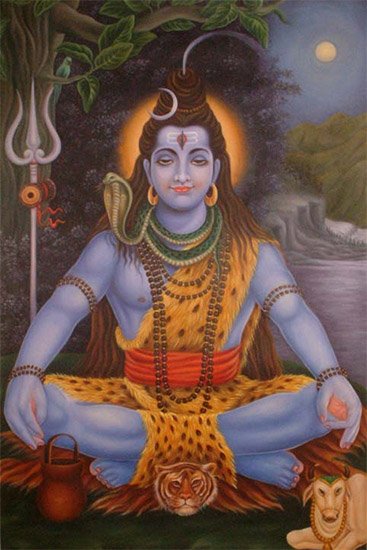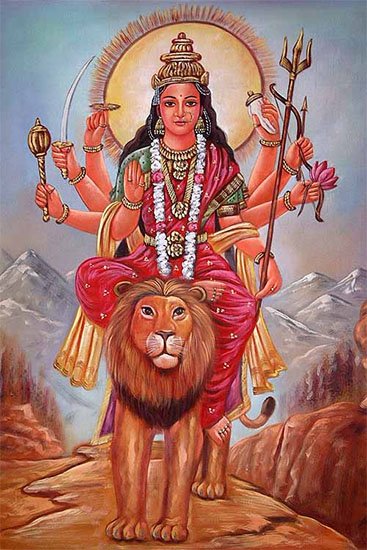Yogeshi, Yogeśī, Yoga-ishi: 4 definitions
Introduction:
Yogeshi means something in Hinduism, Sanskrit. If you want to know the exact meaning, history, etymology or English translation of this term then check out the descriptions on this page. Add your comment or reference to a book if you want to contribute to this summary article.
The Sanskrit term Yogeśī can be transliterated into English as Yogesi or Yogeshi, using the IAST transliteration scheme (?).
In Hinduism
Shaivism (Shaiva philosophy)
Source: Wisdom Library: Kubjikāmata-tantraYogeśī (योगेशी, “gold”):—One of the nine Dūtī presided over by one of the nine bhaivaravas named Hāṭakeśa (emanation of Ananta, who is the central presiding deity of Dūtīcakra), according to the Kubjikāmata-tantra and the Ṣaṭsāhasrasaṃhitā.
Source: Brill: Śaivism and the Tantric TraditionsYogeśī (योगेशी) (or Paramā, Aghorī) (seed-syllable: hā) refers to one of the eight Mother-goddesses (Mātṛs) of the pantheon of Mantra-deities, according to the verse 4.497ff of the Brahmayāmala-tantra (or Picumata), an early 7th century Śaiva text consisting of twelve-thousand verses.—Patterning the processes of inner and outer ritual is the Brahmayāmala’s pantheon of mantra-deities, whose core comprises the Four Goddesses or Guhyakās, Four Consorts or Handmaidens, and their lord, Kapālīśabhairava. Secondary members of the pantheon are a sextet of Yoginīs and an octad of Mother-goddesses [e.g., Paramā].
Note: The eighth Mātṛ, the supreme śakti, Paramā, also called Aghorī or Yogeśī, pervades the entire body, lacking a lotus base and being devoid of ancillary mantras.

Shaiva (शैव, śaiva) or Shaivism (śaivism) represents a tradition of Hinduism worshiping Shiva as the supreme being. Closely related to Shaktism, Shaiva literature includes a range of scriptures, including Tantras, while the root of this tradition may be traced back to the ancient Vedas.
Shaktism (Shakta philosophy)
Source: Google Books: ManthanabhairavatantramYogeśī (योगेशी) refers to a “mitresses of Yoga”, according to the Ṣaṭsāhasrasaṃhitā, an expansion of the Kubjikāmatatantra: the earliest popular and most authoritative Tantra of the Kubjikā cult.—Accordingly, “Stillness (nirācāra) is said to be the exit of the power of the vital breath. The yogi is then one who is Still (nirācāra) and abides on the plane of an Avadhūta. He then performs the rite of adoration of the mitresses of Yoga [i.e., yogeśī] and Śiva”.

Shakta (शाक्त, śākta) or Shaktism (śāktism) represents a tradition of Hinduism where the Goddess (Devi) is revered and worshipped. Shakta literature includes a range of scriptures, including various Agamas and Tantras, although its roots may be traced back to the Vedas.
Languages of India and abroad
Sanskrit dictionary
Source: DDSA: Paia-sadda-mahannavo; a comprehensive Prakrit Hindi dictionary (S)Yogeśī (योगेशी) in the Sanskrit language is related to the Prakrit word: Jogesī.
Sanskrit, also spelled संस्कृतम् (saṃskṛtam), is an ancient language of India commonly seen as the grandmother of the Indo-European language family (even English!). Closely allied with Prakrit and Pali, Sanskrit is more exhaustive in both grammar and terms and has the most extensive collection of literature in the world, greatly surpassing its sister-languages Greek and Latin.
See also (Relevant definitions)
Partial matches: Isi, Yoga, Ici.
Starts with: Yogeshisahasranaman, Yogeshisahasranamastotra.
Full-text: Yogeshisahasranamastotra, Jogesi, Bhairavi, Parama, Aghori.
Relevant text
Search found 2 books and stories containing Yogeshi, Yogeśī, Yoga-ishi, Yogesi, Yoga-īśī, Yoga-isi; (plurals include: Yogeshis, Yogeśīs, ishis, Yogesis, īśīs, isis). You can also click to the full overview containing English textual excerpts. Below are direct links for the most relevant articles:
The Skanda Purana (by G. V. Tagare)
Chapter 83 - Greatness of Yogeśvarī (Yoga-īśvarī) < [Section 1 - Prabhāsa-kṣetra-māhātmya]